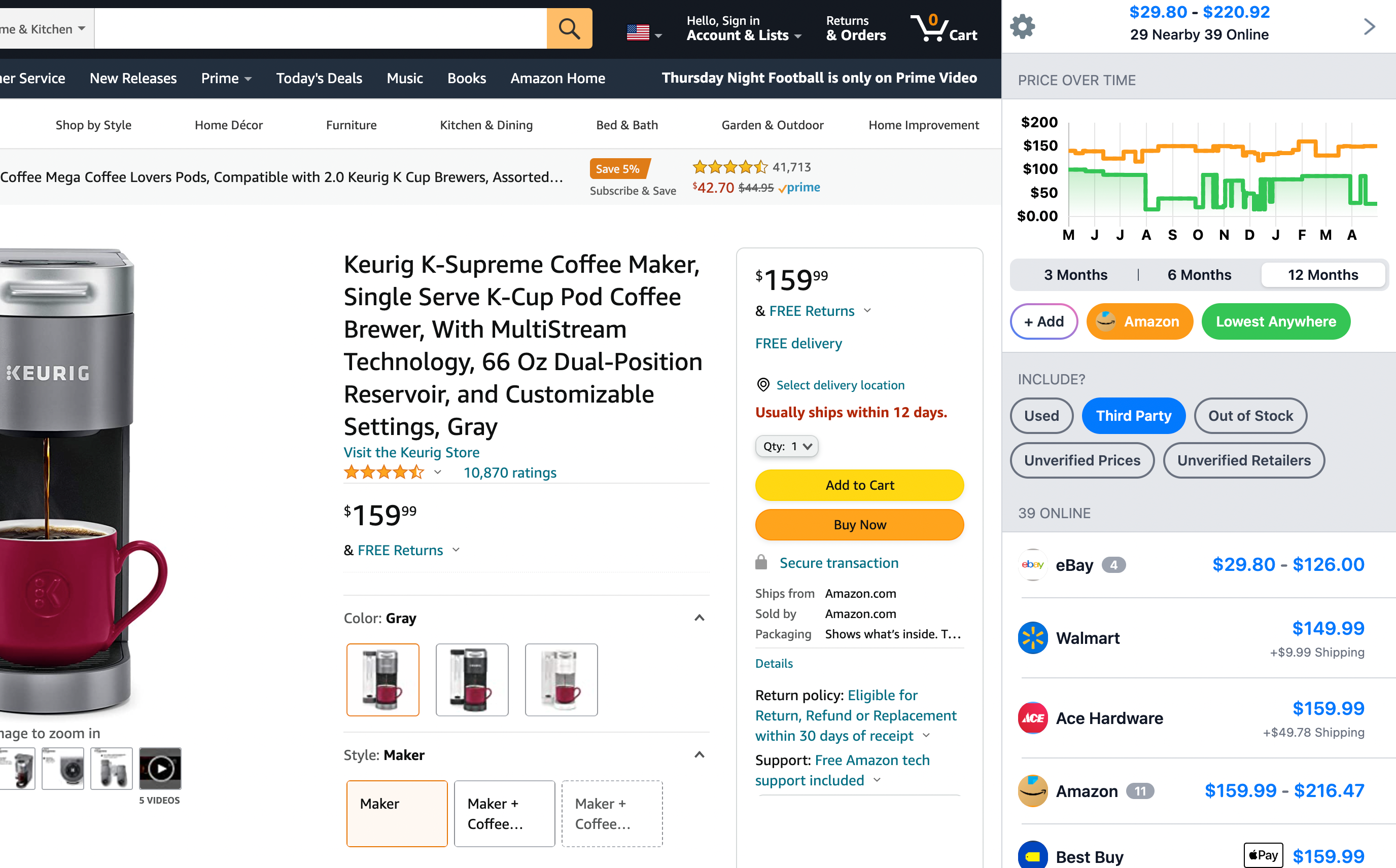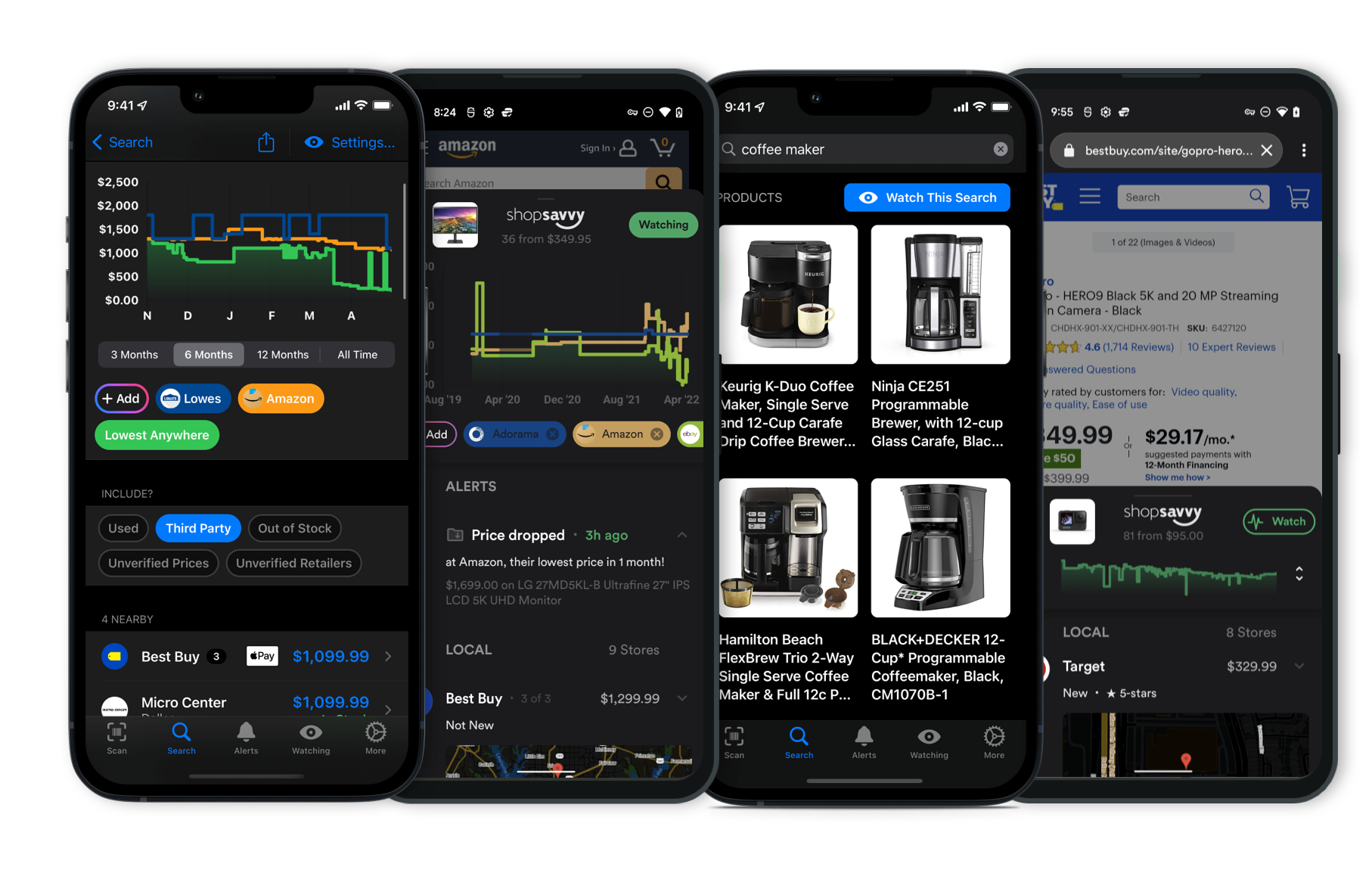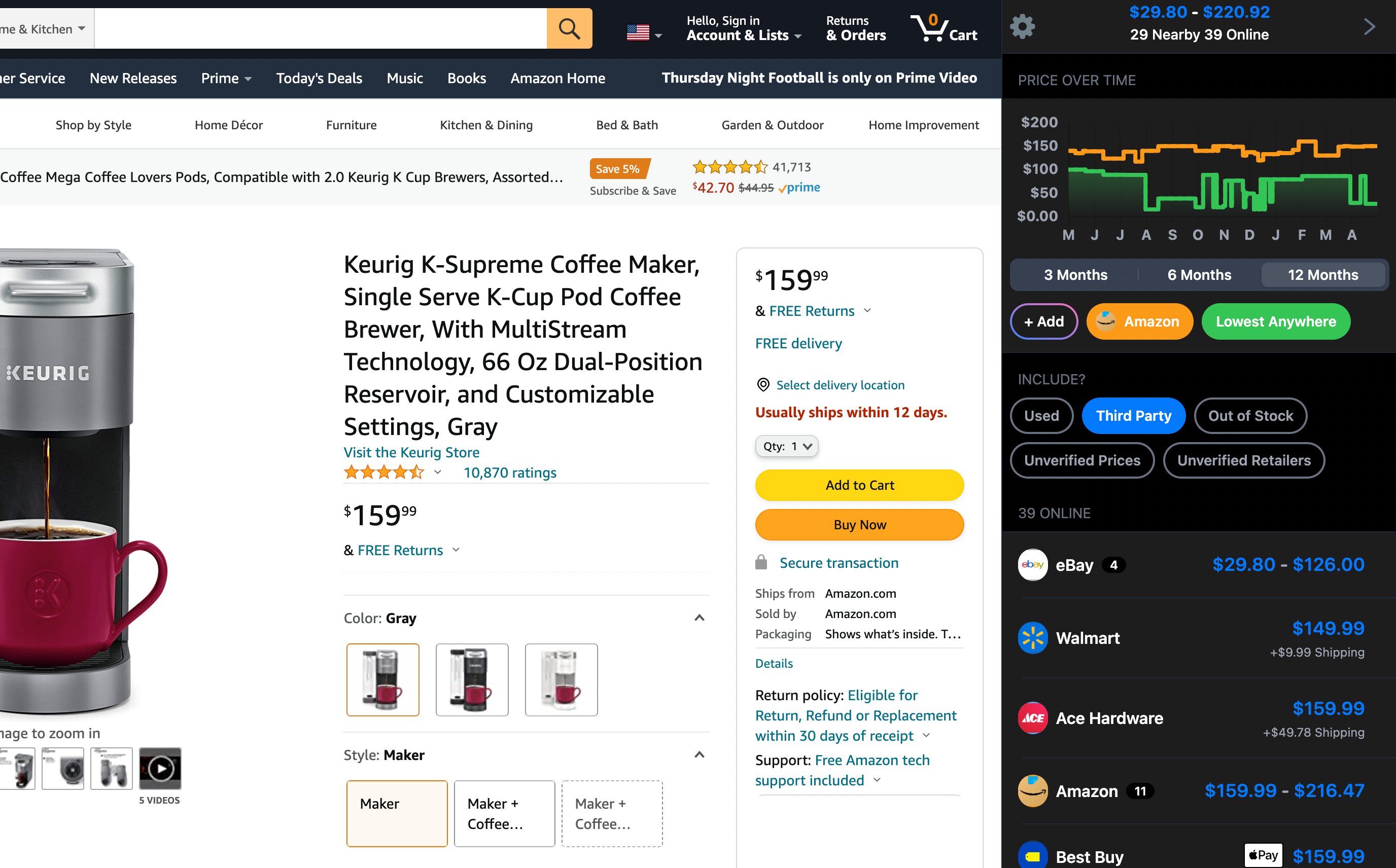Latest Answers for the Product (Page 174)
How does the Intel version of the Surface Pro 9 compare to the ARM version?
When comparing the Intel version of the Surface Pro 9 to the ARM version, there are key differences to keep in mind to help you decide which one suits your needs better.
Performance and Compatibility
The Intel version is powered by 12th-generation Intel Core processors, offering solid performance for a wide range of tasks. According to our research, it's great for multitasking, complex computations, and software that relies on x86 architecture. This makes it a good choice if you'll be using traditional Windows applications or any resource-heavy productivity software.
On the flip side, the ARM version comes with the Microsoft SQ3 processor, developed with Qualcomm. It's great for energy efficiency and connectivity, including 5G. However, it might not work as seamlessly with all legacy Windows applications. According to our research, some software might not run as smoothly or may not be supported at all because of the ARM architecture.
Battery Life and Connectivity
The ARM version generally has longer battery life due to its efficient architecture. The manufacturer claims you can get up to 19 hours of battery on the ARM version compared to about 15.5 hours on the Intel model, which makes the ARM version more appealing if you're always on the move.
Another thing is that the ARM version supports 5G, which the Intel one doesn't. If you often find yourself in areas with strong 5G coverage and need faster data speeds, this could be a big deal for you.
Software and User Experience
When it comes to software, apps optimized for ARM, like certain versions of Microsoft Office, run efficiently on the ARM version. But, the Intel version has broader compatibility with third-party applications.
According to our research, the user experience can vary between the two, especially with professional software. The Intel version might be more reliable here because of its established architecture and better software support.
Audio and Accessories
Both versions of the Surface Pro 9 don't have a headphone jack and rely on Bluetooth or USB-C for audio. While modern, this might be inconvenient if you prefer wired headphones for better sound quality.
Our research suggests that while Bluetooth headphones work well, the call audio quality isn't quite as good as wired headsets.
Conclusion
So, which one should you go for? Here's the rundown:
-
Choose the Intel version if you need strong performance, compatibility with traditional Windows apps, and don't care much about 5G.
-
Go for the ARM version if you want longer battery life, 5G support, and are okay with navigating the limited app compatibility for some Windows applications.
Hope this helps you decide which version aligns best with what you need!
The Microsoft Surface Pro 9 has a pretty solid battery life. The manufacturer claims it can last up to 15.5 hours on a single charge during typical use, which includes things like web browsing, streaming, and other everyday tasks. From our research, many people report getting around 13 to 15 hours, which is pretty close to the manufacturer's estimate.
Some professional reviews, like those from Windows Central and PCMag, also back up these numbers. They mention that the battery can last through an entire workday, making it a good pick if you're someone who moves around a lot and doesn't always have a charger handy.
Just keep in mind that battery life can vary. Things like screen brightness, the apps you're using, and even your network connections can make a difference.
If you're into heavier tasks like video editing or gaming, you might see the battery drain faster.
All in all, if you need a device with good battery life, the Surface Pro 9 is worth considering. Its long-lasting battery is definitely one of its highlights.
The MacBook Air 15-inch M3 comes in a few nice color choices. You can pick from:
-
Silver - The timeless go-to.
-
Space Gray - A sleek, modern vibe.
-
Midnight - Deep and classy.
-
Starlight - A lighter, unique option.
So, whether you like a traditional look or something a bit different, there's probably a color you'll like.
Yeah, the 2024 MacBook Air 15-inch with the M3 chip doesn't have a fan. The fan-less design helps keep it super thin and lightweight, which is great for portability and keeping things quiet.
But, there are some trade-offs if you're doing more demanding tasks.
The M3 chip in this MacBook Air offers a big boost in performance and efficiency, so it's great for everyday activities like browsing, word processing, watching videos, and even some light video editing or casual gaming. The manufacturer claims this chip enhances processing power while staying energy-efficient.
However, because there's no fan, the MacBook Air can slow down to prevent overheating during intense tasks like complex video editing or heavy gaming. Our research found that this can lead to occasional slowdowns when the system gets too hot.
For light gaming and less demanding applications, it works fine. The integrated GPU can handle older or less demanding games well. But if you're into high-end, graphically intensive games, this laptop might not be ideal, as you might notice some lag or slowdowns.
Also, the MacBook Air 15-inch supports connecting to two external displays, but only when the laptop lid is closed. This could be a limitation if you want to use multiple monitors with the lid open.
And there's just two USB-C ports, which could be a downside if you need to connect a lot of peripherals.
So, if you're mainly doing typical productivity tasks, some multimedia work, and general office stuff, the 2024 MacBook Air 15-inch with the M3 chip is a good choice.
But if you need a machine for high-end gaming or very intensive tasks, you might be better off with a MacBook Pro or a high-performance Windows laptop that has a dedicated GPU and more robust cooling.
Yeah, the MacBook Air 15-inch M3 can definitely handle video editing. It’s got the M3 chip from Apple’s 2024 lineup, which means it's built for both everyday stuff and more demanding tasks like video editing. The M3's architecture and performance make it a good fit for those needs.
Plus, it's lightweight and portable without skimping on power, so if you're editing on the go, it’s a solid choice.
From what we found, the high-res Retina display is perfect for video editing. It gives you a clear and crisp view, which is super important for making detailed edits. The battery life is also pretty impressive, so you should be able to work longer without needing to charge all the time.
On top of that, it supports up to 24GB of unified memory, which is more than enough for using video editing software like Final Cut Pro and Adobe Premiere Pro.
The integrated 10-core GPU in the M3 chip helps with rendering and editing videos efficiently as well. And with Wi-Fi 6E, you’ll get faster and more reliable internet, which is handy for uploading or downloading large video files.
All in all, the MacBook Air 15-inch M3 is a good option if you’re looking to mix portability with solid performance for video editing.
How does the M3 chip improve performance in the MacBook Air 15-inch?
The 2024 MacBook Air 15-inch with the M3 chip is quite the performer. It's got an 8-core CPU and can go up to a 10-core GPU, so it can handle pretty demanding stuff like video editing without much fuss. According to our research, the 8GB of unified memory and 256GB SSD combo helps keep things running smoothly, even when you're juggling multiple apps or working on complex projects. You shouldn't see much lag at all.
We've found that many people appreciate how well it runs video editing software. One user even mentioned how great it was for keeping tasks organized while working at a busy café.
Folks also love the snappy performance, vibrant display, and overall usability, making it a solid choice for both work and play. Plus, compared to older MacBook Pro models, this new MacBook Air has better battery life and stays cooler, which is awesome for long editing sessions.
That said, keep in mind it doesn't have the active cooling system that the MacBook Pros have. So if you're pushing it with really intensive tasks, you might notice some thermal throttling, which could slow things down a bit. For heavy-duty video editing, a machine with more RAM and better cooling might be worth considering.
But honestly, for general video editing and everyday use, the 2024 MacBook Air 15-inch with the M3 chip is a sweet spot. It's portable, powerful enough, and has great battery life, making it a great fit for most people.
Whether you're a student, a creative pro, or just need a reliable laptop for multimedia tasks, this MacBook Air is a solid pick.
The 15-inch Apple MacBook Air with the M3 chip has a pretty impressive battery life. According to the manufacturer, you can expect up to 18 hours on a single charge. This makes it really handy if you're always on the go and don’t want to be tied down by frequent charging stops.
From what we've found, this 18-hour estimate is pretty accurate for everyday stuff like web browsing, streaming, and using productivity apps. If you're doing something more intensive like video editing or gaming, the battery life might drop a bit, but it still holds up well.
A big part of this is thanks to the M3 chip, which is designed to be both powerful and energy efficient. So, you're getting a lot of use out of each charge without sacrificing performance.
Many people really appreciate this long battery life for working all day, watching movies, or traveling. Just keep in mind that the actual battery life will vary depending on how you use your laptop, but it generally lives up to the hype.
So if you're looking for a portable and powerful laptop that can keep up with your busy day, the 15-inch MacBook Air with the M3 chip is a great choice.
The ASUS Vivobook 16 covers pretty much all your connectivity needs. From what we found in the manufacturer's product description, it has a bunch of USB ports—both USB Type-C and USB Type-A—so you can plug in all kinds of peripherals or gadgets and transfer data quickly.
There's also an HDMI port, which is super handy if you need to connect to an external monitor or projector, whether for work presentations or extending your screen space at home. You can also easily connect your headphones or external speakers using the 3.5mm audio jack, which is great for watching movies or listening to music.
If you have photos or videos on a memory card, the built-in card reader makes accessing those files directly from your camera or mobile device a breeze.
On the wireless side, it supports Wi-Fi 6 and Bluetooth 5.0, so you'll get fast internet and smooth connections with other Bluetooth devices.
All these options make the Vivobook 16 quite a flexible choice for both work and leisure.
Wondering about the audio quality on the ASUS Vivobook 16?
According to our research, it has built-in speakers that do a decent job for everyday stuff like videos, music, and video calls. The manufacturer claims it has ASUS SonicMaster technology to make the sound clearer and more immersive.
But there's a catch—some folks have mentioned that the sound gets a bit tinny at higher volumes.
So, if you need top-notch audio, you might want to think about using external speakers or headphones.
The ASUS Vivobook 16 is a solid laptop with a 16" FHD+ display and an Intel Core i7-1255U processor. It's great for work, multimedia, and general everyday use, thanks to its 16GB of RAM and 1TB SSD, which help with smooth multitasking and fast data access.
Plus, it's sleek and portable, making it convenient for on-the-go use, and it comes with Windows 11 Home for an easy-to-use interface.
But if you're thinking about gaming, it might not be the best fit. According to our research, while the laptop is speedy and handles general tasks well, it struggles with more demanding games. The integrated Intel Iris Xe graphics are okay for lighter games and older titles but won't cut it for more resource-intensive ones at high settings. For serious gaming, you'd probably need something with a dedicated graphics card.
We've also found some areas where the Vivobook 16 could improve. For example, the keyboard has received mixed feedback; some folks feel the keys are a bit too light. The display is clear and high-def, but the speakers aren't the best, which might impact your multimedia experience.
Another thing to keep in mind is battery life. The manufacturer claims up to eight hours of web browsing, but our research suggests that battery life drops a lot during more intensive tasks like gaming. So, you might find yourself reaching for the charger more often if you're planning long gaming sessions.
In short, the ASUS Vivobook 16 is a great choice for work, multimedia, and daily tasks due to its performance, display, and portability. However, if gaming is your main focus, you might want to check out other laptops with better graphics and longer battery life under load.
 Download ShopSavvy App
Download ShopSavvy AppCompare prices for anything in real-time, set price alerts, watch for deals by keyword, and much more
 Install ShopSavvy Browser Extension
Install ShopSavvy Browser ExtensionCompare and track prices automatically while you shop online at thousands of websites.
Footer 1
Published
Subscribe for Updates
Get the latest news, and updates on ShopSavvy. You'll be glad you did!





